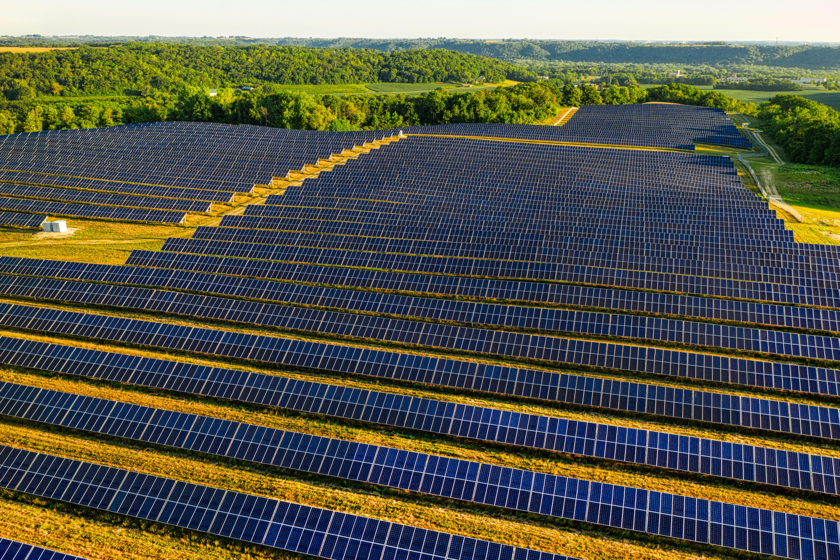Spain presumes to be a world leader in renewables. In spring he covered 100% of the demand with clean energy and in July came to beat records in renewable energy with more than 10,000 GWh, according to electricity data. The paradox remains evident when taking a look at the light bill: the green boom has collided with an invisible wall – with saturated networks and a chronic foul of storage – just when the heat waves shoot the demand and put in check the electrical system.
The abundance that became a problem. In just five years, Spain has gone from irrelevance to becoming the second European country that has installed more solar capacity, only behind Germany. However, that abundance has ended up becoming a headache. In May, wholesale prices came to zero or even negative for a third of the month, according to Red Electricity data cited by Financial Times. And in July, despite beating a new renewable production record, with 13,850 GWh, the light invoices continued to rise, as we pointed in WorldOfSoftware in the middle of the heat wave. The paradox is clear: at noon there is fun cheap energy, but when the sun falls the network cannot sustain the demand and prices shoot again.
The window of the energy transition. The contrast is even more evident if you look at the energy mix. Since July 15, Spain has not generated electricity for weeks from coal for the first time in more than 140 years. A milestone that consolidates the country as a world showcase of energy transition.
However, the face B of success is that it is ruining the profitability of the sector. Projects that were only two years ago sold for € 200,000/MW today barely reach between 28,000 and € 89,000/MW, according to a Financial Times report. The boom has resulted in a wave of “Fire Sales” and a much more uncertain market for investors.
The Price of running too fast. The renewable expansion has been brilliant, but the infrastructure to sustain it has not accompanied the same rhythm. Since 2020, Spain has allocated 0.30 dollars to reinforce its electrical networks for each dollar invested in new solar and wind plants, compared to 0.70 European average, according to Bloombergnef collected by FT. The result is a bottleneck: more than thirty “hot knots” where the network is saturated, especially in Cáceres, Badajoz, Toledo and Ciudad Real. In July alone, more than half of the production cuts – the so -called Curtailments – corresponded to photovoltaic, with about 392 GWh wasted, according to Spanish.
In addition, the low storage capacity aggravates the painting. When the sun sets, photovoltaic production collapses but the demand remains high, forcing the system to resort to gas to cover the hole. That same gas, more expensive in international markets, has become one of the engines of the price increase. To this was added in January the return of the electric VAT to 21%, after years of fiscal reduction to mitigate the energy crisis, as we have described in WorldOfSoftware. The result is noted by the consumer: in July, the average price of light reached € 164/MWh, which meant that an average family would pay between 20 and 25 euros more on its monthly bill compared to last summer.
Heat has something to say. To the structural problems have added short -term factors. The heat waves of the summer have stressed the system: in June, the electrical demand increased by 14% in Spain, 9% in France and 6% in Germany, as we have explained in WorldOfSoftware. With the air conditioners working at full performance, the demand is triggered just when the nuclear and thermal plants reduce their capacity due to the lack of cold water in the rivers to refrigerate. France has been the country most affected by this phenomenon, but Spain has also felt pressure.
A decree waiting for the end of summer. The third leg of this whole issue has to do with politics. After the April blackout, the Government approved in June a decree “antiapagon” that sought to strengthen the network and give an impulse to energy storage. However, on July 22 the norm was rejected in Congress with 183 votes against, in a coalition of rejection between the conservative opposition and part of the left. Since then, the Executive tries to carry out some of these measures through regulatory reforms that do not need parliamentary approval.
The other face of the solar boom. Given this panorama, the market looks for exits. One of them are the long -term energy sale contracts (PPAS), which ensure stable prices to corporate customers. The Zelestra project in Belinchón, for example, closed an agreement with pharmacists such as Takeda and Teva when the average of the PPAS in Spain was around € 39/MWh, according to FT.
Another change vector is marked by technological giants. Amazon, Meta and Microsoft have announced large data centers in Spain, attracted by the abundance of cheap energy. “There is an enormous interest, the number one fate in Europe considers Spain,” admitted the CEO of Zelestra in statements collected by expansion. However, enthusiasm ranges with the same obstacles: slow permits and lack of network connection points.
It is not exclusive to Spain. As they have detailed in the Spanish report, Germany needs to reinforce 14,000 kilometers of high voltage lines to transfer their renewable energy from north to the industrial south; Scotland has come to pay wind parks for not producing; And in the United States there are about 1,000 GW of renewable projects waiting for a network connection, almost four times the installed capacity.
A brilliant future among cracks. Spain has potential, but its electrical system is not prepared to manage so much clean energy. As an executive quoted by Financial Times summarized: “The problem is not that Spain has gone too fast with renewables, but has been too slow with networks.”
The future of the energy transition will not depend on installing more panels, but on building networks and storage that convert solar abundance into safety and lower invoices. The invisible wall is already in sight: the question is whether Spain will be able to tear it down in time.
Image | Pexels
WorldOfSoftware | China broke the solar panel market. Now their companies have had to say goodbye to a third of their employees











